- Home
- Orhan Pamuk
The Museum of Innocence Page 43
The Museum of Innocence Read online
Page 43
Over the first two and a half years, individual visits to the Keskins’ shed their singularity—the looks I exchanged with Füsun, the meals we shared, our conversations, and our excursions to the Bosphorus, which now extended into winter—without exception, each reenacted an event that had happened before; amassed they evoked a sense of the quotidian (with its own beauty) that was out of time. If we couldn’t get Feridun’s art film into production, the commencement of shooting was forever only months away.
Füsun had resolved, or was acting as if she had resolved, that the art film would take longer than she’d hoped, and that venturing on her own into the commercial film business would leave her vulnerable; however, the anger expressed in her looks was not entirely dissipated. Some nights, if our eyes chanced to meet, instead of looking away like a shy girl, she would bore into me with a fury reminding me of all my faults. I would become despondent at this sudden display of all the anger she had suppressed, but knowing that this made her feel closer to me, I’d rejoice.
By now I’d resumed asking, as the evening drew to a close, “Füsun, how is your painting going?” regardless of whether Feridun was at home or not. (After that evening at the Huzur Restaurant, Feridun was going out less frequently, and having supper with us instead, as the film business was in trouble by now anyway.) I remember once the three of us got up from the table together to consider the painting of a pigeon that Füsun was then working on, and afterward we discussed it at length.
“I really admire how slowly and patiently you work, Füsun,” I whispered.
“I’ve been saying the same thing. She should have an exhibition!” said Feridun, also in low tones. “But she’s too shy….”
“I’m doing these to help pass the time,” said Füsun. “The hardest part is getting the feathers on the pigeon’s head to shine. Do you see?”
“Yes, we see,” I said.
A long silence followed. Feridun had stayed home that night also to watch the sports roundup, I think. When he heard someone scoring a goal, he ran out to the television.
“Füsun, let’s go to Paris one day to visit all the museums, and see all the paintings. I’d like that so much,” I said.
This was bold: a crime punishable by pouts, frowns, indignation, and the silent treatment for many visits, but Füsun took my words very naturally: “I’d like to go, Kemal.”
Like so many children, I’d had a passion for painting during my school years, and for a time, when at middle school and lycée, I had used the Merhamet Apartments to paint “by myself,” even dreaming of becoming a painter one day. It was in those days that I’d first indulged in childish dreams of going to Paris to see all the paintings. From the 1950s until the early 1960s, there was not a single museum in Istanbul in which you could see paintings; there weren’t even any art books or catalogs that one could leaf through for pleasure. So neither Füsun nor I knew much about the art of painting. It was enough for us to enlarge black-and-white photographs of birds and other things and color them in.
As one visit to the Keskins’ followed another, the streets of Istanbul, the world beyond the house, took on an eerie cast. To look at Füsun’s paintings, to witness their slow progress, poring over the photographs of Istanbul’s birds that Feridun had taken for her, and musing in hushed voices about which she should paint next—the hawk, the dove, or the swallow—this intimation of security, continuity, and the pleasures of home seemed to fix things for all eternity. It lifted up my heart to behold that we lived in a universe both simple and good. The peace I felt came from the place, the room, our mood, and what we saw around us; it came from Füsun’s slow progress painting birds, and the brick red dye in the Uşak carpet on the floor, the pieces of cloth, the buttons, the old newspapers, Tarık Bey’s reading glasses, the ashtrays, and Aunt Nesibe’s knitting—in my mind they were all one piece. I would inhale the room’s fragrance, and later, back in the Merhamet Apartments, the thimble or button or spool I’d pocketed before leaving would help me remember all this, and so prolong my happiness.
After clearing the plates at the end of the meal and putting the big serving platters with the leftover food into the refrigerator (visitors to the museum should pay special attention to the Keskins’ refrigerator, which always struck me as possessing supernatural qualities), Aunt Nesibe would go to fetch her knitting set, which she kept in a capacious old plastic bag, or more typically ask her daughter to fetch it. This was the time when we would retire to the back room. Aunt Nesibe would say, “My daughter, could you bring my knitting when you come back?” Then she would settle in to enjoy knitting and chatting in front of the television. It was because she feared Uncle Tarık, I think, that Aunt Nesibe, who didn’t mind our being alone together in the back room, would not let a suspicious length of time elapse before following us into the room and saying, “Where’s my knitting? The Winds of Autumn is about to begin. Don’t you want to watch it?”
We would watch it. During those eight years I must have watched hundreds of films and television series with Füsun and her family; but I, who can remember even the smallest, most trivial details of anything connected to the Keskin household, can recall not a thing about the films and series we saw, and even less of those discussion programs aired to mark national holidays (with titles like The Conquest of Istanbul: Its Place in World History; Turkishness: What Must It Reflect?; and Coming to a Better Understanding of Atatürk).
Most of what I recall of the things we watched on television were discrete moments (Aristotle, the theorist of time, would have approved). Such moments would combine with an image and remain engraved in my memory. Half of this indelible memory would be made of the image on the screen or even just a fragment of it. The shoe and the trouser cuffs of an American detective racing up the stairs; an old building’s chimney, which was of no interest to the cameraman, but which had nevertheless slipped into the frame; a woman’s hair, tucked behind her ear, during a kissing scene (while silence reigned at the table); or a timorous girl clinging to her father at a football match, surrounded by thousands of mustached men (probably there was no one at home to look after her); or the socks worn by the closest of the men bent over in prayer at a mosque in Ramadan, on the Night of Measures; or the Bosphorus ferry in the background in a Turkish film; or the tin from which the villain had eaten dolmas; and a good many other things. In my mind these images would combine with a detail of Füsun’s face as she watched that scene: a corner of her mouth, her raised eyebrows, the placement of her hand, the way she left her fork on the side of her plate, or her eyebrows suddenly aloft as she stubbed out her cigarette. Often these images would fix themselves in my mind like the dreams we can never forget. In an effort to make them visible in the Museum of Innocence, I provided artists with detailed instructions, which assumed the form either of questions or of images, but to the questions I never found an exact answer. Why was Füsun so moved by that scene? What was it that had pulled her so far into the story? I would have liked to ask her myself, but when a film ended the Keskins were not inclined to discuss how it had affected them, preferring to discuss the denouement in moral terms.
For example, Aunt Nesibe would say, “That filthy brute got what he deserved, but I still pity the boy.”
“Oh, come on, they don’t even remember the child,” Tarık Bey would say. “Men like that worship money and nothing else. Turn it off, Füsun.”
When Füsun pressed the button, all those brutes—the strange European men, the American gangsters, that odd, feckless family, and even the despicable writer and director who had created the film—would be sucked into the dark eternity beyond the screen like swirls of cloudy water flushing down a bathtub drain.
Immediately, Tarık Bey would say, “Oh, that feels much better, to put all that behind us!”
“All that” could have been a Turkish film or a foreign one, a panel discussion, the sly emcee of a quiz show, or the idiotic contestants! Those words would add to the peace I felt, and the very phrase seemed to confirm that the
most important thing was that I stay here keeping company with Füsun and her family. And so I would realize that I wanted to remain, not just for the pleasure of sitting at the same table in the same room as Füsun, but out of my profound attachment to this house, this building, and every member of the Keskin family. (It is through my reproduction of that enchanted space that museum visitors can wander, as if through Time.) I would particularly like them to note the way my love for Füsun slowly radiated outward to encompass her entire world, and every moment, every object connected with her.
This feeling I had of being outside Time while watching television, the deep peace that made it possible to visit the Keskin family faithfully, and to love Füsun for eight years—it was broken only when the news came on, repeating how the country was sliding fast into civil war.
By 1978, bombs were going off at night even in this neighborhood. The streets leading to Tophane and Karaköy were controlled by nationalist factions, and in the papers it was claimed that many murders had been planned in the local coffeehouses. At the top of Çukurcuma Hill, on the crooked cobblestone streets heading toward Cihangir, by contrast, the residents were petty bureaucrats, workers, and students sympathetic to the Kurds, the Alevis, and various left-wing factions. They were no less fond of weapons, and on occasion militants from both sides would engage in armed combat to take control of a street, a coffee house, or a little square; sometimes, following the explosion of a bomb planted by gangsters controlled from afar by the secret services or some other arm of the state, a fierce pitched battle would ensue. It took quite a toll on Çetin Efendi, who was often caught in the crossfire, and never sure where to park the Chevrolet or at which coffeehouse to wait, but whenever I suggested that I could go to the Keskins’ alone, he adamantly refused. By the time I left the Keskins, the streets of Çukurcuma, Tophane, and Cihangir were never safe. Along the way as shadows tacked up posters, plastered notices, and scrawled slogans across walls, we’d exchange fearful looks in the mirror.
With the evening news relaying the details of the bombings, killings, and massacres, the Keskins felt the peace of being safe at home, thank God, but they were worried about the future. The news was so awful, we were disinclined to discuss it, preferring to talk about the charms of Aytaç Kardüz, the host of the day. Unlike the relaxed women newscasters in the West, Aytaç Kardüz sat like a statue, never once smiling, and rushing through her reports as she read from the copy in her frozen hands.
“Slow down, my girl, take a breath, you’re going to choke,” Tarık Bey would say from time to time.
Although he had made this joke hundreds of times, we would all still laugh as if he were saying it for the first time, because Aytaç Kardüz, so disciplined and devoted to her work, could be quite amusingly terrified of making a mistake; she would race to the end of a sentence without once stopping to breathe, and in the event of a very long sentence she would sometimes turn red before she had got it all out.
“Oh no, she’s going red again,” Tarık Bey would say.
“Slow down, my child, at least stop to swallow,” Aunt Nesibe would say.
Then Aytaç Kardüz would take her eyes off the page from which she was reading, as if having heard Aunt Nesibe’s plea; glancing at all of us sitting at the table watching her with a mixture of panic and joy, she would exert the effort of a child who has just had her tonsils out, to swallow, whereupon Aunt Nesibe would say, “Well done, my girl!”
It was from this newscaster that we heard that Elvis Presley had died in his mansion in Memphis, that the Red Brigade had kidnapped Aldo Moro, and that Celâl Salik had been shot and killed outside Alaaddin’s shop in Nişantaşı, together with his sister.
There was another way the Keskins had of distancing themselves from the care of the world, and I found it very soothing: They would look for resemblances between the people on the screen and their own friends and relations, and, as we ate, they would remark on the similarities with great attention.
At the end of 1979, as we watched the Soviet invasion of Afghanistan, I recall discussing how Babrak Karmal, the new Afghan president, was virtually the double of a man who worked in the neighborhood bakery, so similar that the two could have been brothers. It was Aunt Nesibe who first mentioned it. She enjoyed the search for resemblances at least as much as Tarık Bey. At first no one could tell whom she meant, but because I had Çetin regularly stop the car in front of the bakery long enough for me to run in and buy a few loaves still hot from the oven, I knew the faces of the Kurds who worked there and could pronounce Aunt Nesibe’s observation absolutely right. My endorsement notwithstanding, Füsun and Tarık Bey stubbornly insisted that the man tending the till bore no resemblance whatsoever to the new Afghan president.
Sometimes Füsun seemed to be contrary just to spite me. She refused, for example, to accept that Anwar Sadat, the Egyptian president who was killed by Islamists while reviewing a military procession from the box of honor, just as our staff officers do, was the spitting image of the newsagent on the corner of Çukurcuma Hill and Boğazkesen Avenue; and if you ask me, it was because I was the one who made the comparison. As the coverage of Sadat’s assassination went on for several days, there ensued a war of nerves between me and Füsun that I did not care for at all, and it went on for days, too.
If the majority at the Keskin table agreed on a resemblance, we could, from then on, without dissent, allude to the eminent person on the screen not as Anwar Sadat but as Bahri Efendi the newsagent. By the time I entered my fifth year of eating supper at the Keskins’, I too had agreed that Nazif Efendi the quilt seller resembled the famous French actor Jean Gabin (whom we’d seen in many films); and that the awkward weathergirl who sometimes appeared on the evening news resembled Ayla, who lived downstairs with her mother and was one of the friends Füsun hid from me; while the late Rahmi Efendi was a dead ringer for the elderly head of the Islamist party, who would fulminate on the evening news; and Efe the electrician recalled the famous sportswriter who summarized the week’s goals on Sunday evenings; and it was I who (mainly on account of his eyebrows) likened Çetin Efendi to President Reagan.
Once pegged, the appearance of one of these famous faces on the screen was the signal to see who among us would crack the first joke. “Hurry over and look at this, children!” Aunt Nesibe would say. “See how beautiful Bahri Efendi’s American wife is!”
But there were instances, too, when we struggled to work out a match for the famous person on the screen. For example, when Kurt Waldheim, the Secretary-General of the UN who was so busy trying to make peace between Israel and Palestine, appeared, Aunt Nesibe would say, as if calling for help, “So let’s see, who does this man look like?;” as we all searched our experiences, the table would fall silent for a very long time. These silences could continue long after the famous person faded from the screen, to be replaced by other scenes, news items, or commercials.
Then suddenly I’d hear a ship coming from the direction of Karaköy and Tophane blowing its whistle, and I would remember the noise of the city, and its crowds, and as I tried to conjure up the image of the ferries approaching the piers, I would reluctantly realize just how involved I’d become with the Keskin family, how much time I’d spent eating at this table: As these ships had gone by, blowing their whistles, I’d not even noticed how many months and years had passed us by.
63
The Gossip Column
AS THE country slid toward civil war, the exploding bombs and the pitched street battles resulted in fewer people going to the cinema, which absence had devastated the film industry. The Pelür Bar and other industry watering holes were as crowded as ever, but by now, with families no longer even venturing out into the streets in the evening, the film people were all struggling to get by doing commercials or skin flicks and fight films now flooding the market. In just the past two years, big producers had stopped investing in the sorts of films we’d enjoyed over the summer, a development that suddenly elevated me among the habitués of the Pelür Bar,
in whose eyes I was the wealthy backer of Lemon Films, and potentially an investor in their ventures. Though I was managing for the most part to stay away from the Pelür, one evening, at Feridun’s insistence, I went and saw that the crowd was larger than ever, a fact explained later when I heard from the drunks that unemployment had been a boon to the bars and that “all of Yeşilçam” was “hitting the bottle.”
That evening I, too, drank until morning with the miserable film crowd. I even recall chatting amiably with Tahir Tan, the man who had once pursued Füsun all the way to the Huzur Restaurant. By the end of the same evening, Papatya, one of the most charming of the new generation of young actresses, had claimed me as a “friend.” Only a few years earlier Papatya had been starring in family films as the innocent girl who sold simits and looked after her blind mother, or continually dissolved into tears as her stepmother, played by Conniving Sühendan, plotted her ruination; now she, like the others, was out of work and forced to take on dubbing domestic porn films; but there was a screenplay that Feridun had also found interesting, and she was hoping for my backing to produce it. Drunk as I was, I could see that Feridun found Papatya interesting, too—there was what film magazines called a “certain intimacy” between them—and yet I was rather amazed by his annoyance at the attention I paid her. Toward morning, when the three of us left the Pelür, I remember walking together through the dark backstreets, past walls on which drunks had relieved themselves and leftists had scrawled radical slogans, making our way to Cihangir, where Papatya lived with her mother, who worked as a singer in low-rent nightclubs. As menacing packs of dogs followed us down the cold streets, I left it to Feridun to see Papatya home and returned to Nişantaşı, where I lived peacefully with my mother.

 Snow
Snow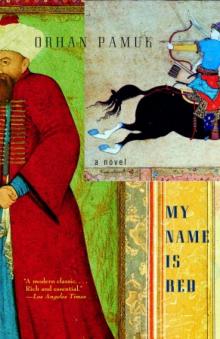 My Name is Red
My Name is Red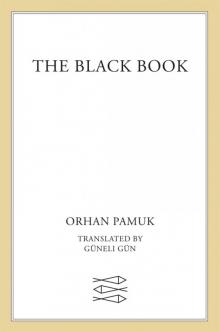 The Black Book
The Black Book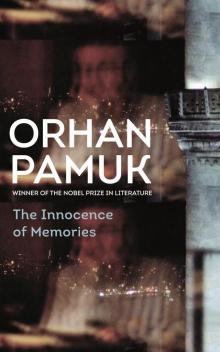 The Innocence of Memories
The Innocence of Memories The White Castle
The White Castle Other Colors
Other Colors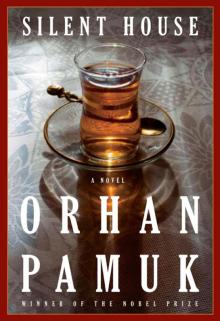 Silent House
Silent House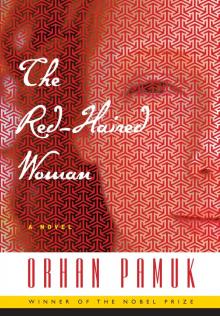 The Red-Haired Woman
The Red-Haired Woman The Museum of Innocence
The Museum of Innocence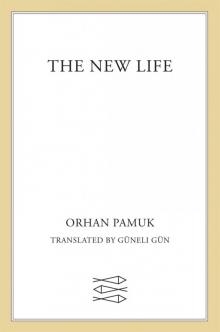 The New Life
The New Life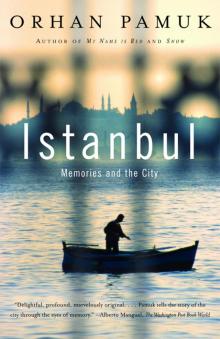 Istanbul
Istanbul